STICK GUIDE
STICK GUIDE
STICK GUIDE
OUR HOCKEY STICK PATTERN
Choose from many of our standard curves or have your very own one made upon request.
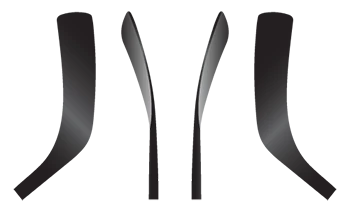
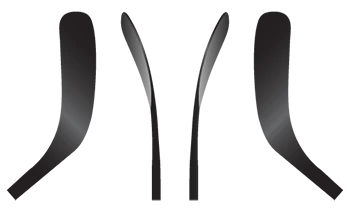

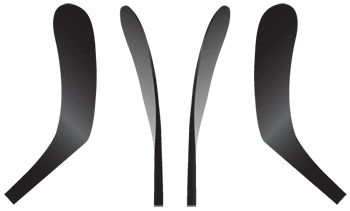
MH02
MH9
MH14
MH28 | MAX
Lidstrom, Getzlaf, Kesler, Kronwall
Curve: HEEL
Face: OPEN
Toe: SQUARE
Length: LONG
Depth: 12mm-1/2”
Lie: 6
Toe Drag, Slapshots, Precision saucer passes
Bauer P02
CCM P38/P45/P20-Lid
Easton E5
Sher-Wood PP05
STX PP05
True Hockey HCS
Warrior W12/W02
Fischer P05
Winnwell P115
Stamkos, Malkin, Larkin, Duchene, Lupul, Scheifele, Bouchard, Tavares (alt)
Curve: MID-HEEL
Face: SLIGHT-OPEN
Toe: ROUND
Length: SHORT-MED
Depth: 9mm-3/8″
Lie: 6
Toe Drag, Puck Control, Top Shelf, Passing, Stick Handling
Bauer PM9
CCM P14/P45
Easton E4
Sher-Wood PP96
STX X9
True Hockey MC2
Verbero V90
Warrior W01
Toews, Chara, Bergeron, Landeskog
Curve: MID-TOE
Face: SLIGHT-OPEN
Toe: ROUND
Length: SHORT-MED
Depth: 12mm-3/8″
Lie: 6
Toe Drag, Shooting
Bauer P14
CCM P39/P49
Warrior W14/W71
Sher-Wood PP14
Eichel, McDavid, Yakupov, Gallagher, Miller
Curve: MID-TOE
Face: OPEN
Toe: ROUND
Length: MED
Depth: 12mm-1/2″
Lie: 5
Toe Drag, Puck Control, Top Shelf, Quick Release, Wrist Shoot, Accuracy
Bauer P28
CCM P28
Easton E28
Sher-Wood P28
True Hockey TC4
Verbero V28
Warrior W28

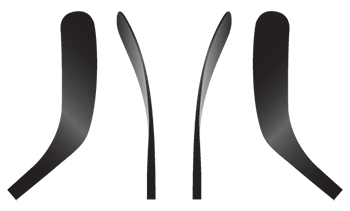
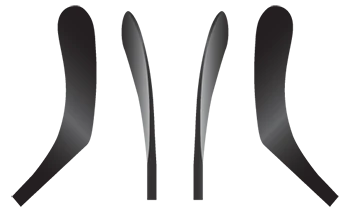

MH77
MH88
MH91A
MH92 | MAX
Coffey
Curve: MID
Face: OPEN
Toe: ROUND
Length: LONG
Depth: 0.75”
Lie: 6
Puck Control, Passing, Wrist Shots, One Timer
Sher-Wood PP77
Warrior W71 (with a deeper open Toe)
Fischer P77
Kane, Lindros, Van Riemsdyk, Perron, MacKinnon, Iginla, Gaudreau, Hossa, Hedman, Zetterberg, Panarin
Curve: MID
Face: SLIGHT-OPEN
Toe: ROUND
Length: MED
Depth: 14.3mm-9/16″
Lie: 6
Wrist Shots, Puck Handling, Passing
Bauer P88
CCM P80/P88/P40
Easton E36
Sher-Wood PP88
STX X88
True Hockey MC
Verbero V88
Warrior W88
Fischer P88
Winnwell PS188
Staal, Phaneuf, Jones, Drury, Granlund, Parise, Galchenyuk
Curve: MID-HEEL
Face: OPEN
Toe: ROUND
Length: LONG
Depth: 12mm-1/2″
Lie: 6
Top Shelf, Deflections
Bauer P91A
CCM P6/P15/P20
Easton E6
Sher-Wood PP05/PP20
True HCR
Warrior W05
Winnwell PS124
Backstrom, Matthews, Sakic, Marner, Hall, Statsny, Crosby, Nugent-Hopkins, Kopitar, Grabner
Curve: MID-TOE
Face: OPEN
Toe: ROUND
Length: MED
Depth: 12mm-1/2″
Lie: 6
Toe Drag, Puck Control, Top Shelf
Bauer P92
CCM P29/P90
Easton E3
Sher-Wood PP26
STX X92
True Hockey TC2
Verbero V92
Warrior W03
Fischer P92
Winnwell PS119
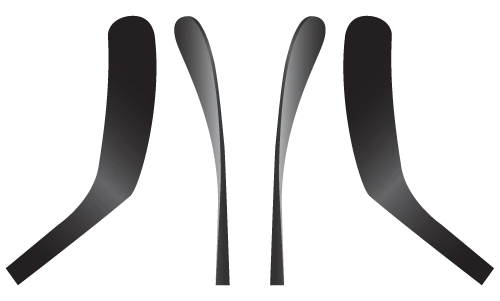

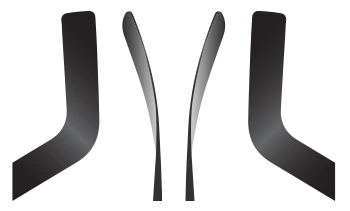
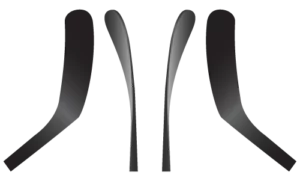


MH8 Crazy Ovi
MH90TM
MH31 Goalie
Ovechkin Pro Curve Old
Curve: HEEL
Face: VERY-OPEN
Toe: ROUND
Length: LONG
Depth:
Lie: 6
Toe Drag, Slapshots, One Timer
Warrior W11
Tavares, Benn
Curve: MID
Face: OPEN
Toe: ROUND
Length: LONG
Depth:
Lie: 6
Face Offs, Tipping Pucks, Puck Handling+Control
Hybrid of P28 and P29 Curves with a MAX Height Feature! Best of both Worlds 😉
Bishop, Crawford, Bernier, Luongo, Lack
Curve: MID-HEEL
Face: OPEN
Toe: SQUARE
Length: MED
Depth: DEEP
Lie: 14
Regular Lie and Paddle Length for optimal stance position. Mid-Open Curve will increase puck control and will allow the goalie to raise the puck quickly
Bauer P31
Sher-Wood PP30
TRUE TC
Warrior W33
CCM 155-1
CCM P4 182-2
- HEEL curves bend more near the heel of the Blade. This means that the bend of the blade starts here and straightens slightly towards the middle and toe. Heel curves are primarily used by defenders as they help improve the power and accuracy of slap shots.
- TOE curves with most of the bend centered around the toe of the blade, are often preferred by forwards because they allow them to lift the puck more quickly and easily when shooting in tight spaces in front of the net.
- MID curves are a combination of both. Since most of the bend is in the center of the blade, such curves are great for passing as well as for greater precision in all types of shots.

MH02
Lidstrom, Getzlaf, Kesler, Kronwall
Curve: HEEL
Face: OPEN
Toe: SQUARE
Length: LONG
Depth: 12mm-1/2”
Lie: 6
Toe Drag, Slapshots, Precision saucer passes
Bauer P02
CCM P38/P45/P20-Lid
Easton E5
Sher-Wood PP05
STX PP05
True Hockey HCS
Warrior W12/W02
Fischer P05
Winnwell P115

MH9
Stamkos, Malkin, Larkin, Duchene, Lupul, Scheifele, Bouchard, Tavares (alt)
Curve: MID-HEEL
Face: SLIGHT-OPEN
Toe: ROUND
Length: SHORT-MED
Depth: 9mm-3/8″
Lie: 6
Toe Drag, Puck Control, Top Shelf, Passing, Stick Handling
Bauer PM9
CCM P14/P45
Easton E4
Sher-Wood PP96
STX X9
True Hockey MC2
Verbero V90
Warrior W01

MH14
Toews, Chara, Bergeron, Landeskog
Curve: MID-TOE
Face: SLIGHT-OPEN
Toe: ROUND
Length: SHORT-MED
Depth: 12mm-3/8″
Lie: 6
Toe Drag, Shooting
Bauer P14
CCM P39/P49
Warrior W14/W71
Sher-Wood PP14

MH28 | MAX
Eichel, McDavid, Yakupov, Gallagher, Miller
Curve: MID-TOE
Face: OPEN
Toe: ROUND
Length: MED
Depth: 12mm-1/2″
Lie: 5
Toe Drag, Puck Control, Top Shelf, Quick Release, Wrist Shoot, Accuracy
Bauer P28
CCM P28
Easton E28
Sher-Wood P28
True Hockey TC4
Verbero V28
Warrior W28

MH77
Coffey
Curve: MID
Face: OPEN
Toe: ROUND
Length: LONG
Depth: 0.75”
Lie: 6
Puck Control, Passing, Wrist Shots, One Timer
Sher-Wood PP77
Warrior W71 (with a deeper open Toe)
Fischer P77

MH88
Kane, Lindros, Van Riemsdyk, Perron, MacKinnon, Iginla, Gaudreau, Hossa, Hedman, Zetterberg, Panarin
Curve: MID
Face: SLIGHT-OPEN
Toe: ROUND
Length: MED
Depth: 14.3mm-9/16″
Lie: 6
Wrist Shots, Puck Handling, Passing
Bauer P88
CCM P80/P88/P40
Easton E36
Sher-Wood PP88
STX X88
True Hockey MC
Verbero V88
Warrior W88
Fischer P88
Winnwell PS188

MH91A
Staal, Phaneuf, Jones, Drury, Granlund, Parise, Galchenyuk
Curve: MID-HEEL
Face: OPEN
Toe: ROUND
Length: LONG
Depth: 12mm-1/2″
Lie: 6
Top Shelf, Deflections
Bauer P91A
CCM P6/P15/P20
Easton E6
Sher-Wood PP05/PP20
True HCR
Warrior W05
Winnwell PS124

MH92 | MAX
Backstrom, Matthews, Sakic, Marner, Hall, Statsny, Crosby, Nugent-Hopkins, Kopitar, Grabner
Curve: MID-TOE
Face: OPEN
Toe: ROUND
Length: MED
Depth: 12mm-1/2″
Lie: 6
Toe Drag, Puck Control, Top Shelf
Bauer P92
CCM P29/P90
Easton E3
Sher-Wood PP26
STX X92
True Hockey TC2
Verbero V92
Warrior W03
Fischer P92
Winnwell PS119

MH8 Crazy Ovi
Ovechkin Pro Curve Old
Curve: HEEL
Face: VERY-OPEN
Toe: ROUND
Length: LONG
Depth:
Lie: 6
Toe Drag, Slapshots, One Timer
Warrior W11

MH90TM
Tavares, Benn
Curve: MID
Face: OPEN
Toe: ROUND
Length: LONG
Depth:
Lie: 6
Face Offs, Tipping Pucks, Puck Handling+Control
Hybrid of P28 and P29 Curves with a MAX Height Feature! Best of both Worlds 😉

MH31 Goalie
Bishop, Crawford, Bernier, Luongo, Lack
Curve: MID-HEEL
Face: OPEN
Toe: SQUARE
Length: MED
Depth: DEEP
Lie: 14
Regular Lie and Paddle Length for optimal stance position. Mid-Open Curve will increase puck control and will allow the goalie to raise the puck quickly
Bauer P31
Sher-Wood PP30
TRUE TC
Warrior W33
CCM 155-1
CCM P4 182-2
- HEEL curves bend more near the heel of the Blade. This means that the bend of the blade starts here and straightens slightly towards the middle and toe. Heel curves are primarily used by defenders as they help improve the power and accuracy of slap shots.
- TOE curves with most of the bend centered around the toe of the blade, are often preferred by forwards because they allow them to lift the puck more quickly and easily when shooting in tight spaces in front of the net.
- MID curves are a combination of both. Since most of the bend is in the center of the blade, such curves are great for passing as well as for greater precision in all types of shots.
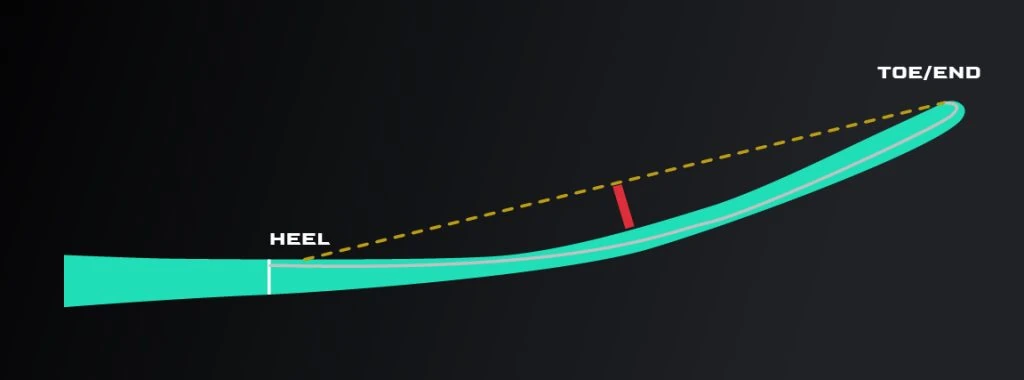
THE CURVE
The official IIHF rule is as follows: “The curvature of the blade shall be limited so that the distance of a perpendicular, measured from a straight line drawn from any point on the heel to the end (Toe) of the blade, is to the point of greatest curvature is no more than 1.9 cm.”. Today, league referees have fancy gauges to check for illegal curves.

Over the years, an interesting trend has established itself in the blade patterns of ice hockey sticks, which can be found in a similar form in the world of music: names of well-known NHL stars such as Ovechkin, McDavid and Crosby stand for these godfathers. However, elite player pay less attention to world-famous stars and more to the following essential purchase criteria: The shape of the blade curve, which represents the so-called HEEL, MIDDLE or TOE, describes the most curved area of the blade. The curve depth, which usually ranges between 9.5 mm and 13 mm, indicates the radius of the curvature of the blade face.
Over the years, an interesting trend has established itself in the blade patterns of ice hockey sticks, which can be found in a similar form in the world of music: names of well-known NHL stars such as Ovechkin, McDavid and Crosby stand for these godfathers. However, elite player pay less attention to world-famous stars and more to the following essential purchase criteria: The shape of the blade curve, which represents the so-called HEEL, MIDDLE or TOE, describes the most curved area of the blade. The curve depth, which usually ranges between 9.5 mm and 13 mm, indicates the radius of the curvature of the blade face.
KRÜMMUNG DER KELLE
The official IIHF rule is as follows: “The curvature of the blade shall be limited so that the distance of a perpendicular, measured from a straight line drawn from any point on the heel to the end (Toe) of the blade, is to the point of greatest curvature is no more than 1.9 cm.”. Today, league referees have fancy gauges to check for illegal curves.

Over the years, an interesting trend has established itself in the blade patterns of ice hockey sticks, which can be found in a similar form in the world of music: names of well-known NHL stars such as Ovechkin, McDavid and Crosby stand for these godfathers. However, elite player pay less attention to world-famous stars and more to the following essential purchase criteria: The shape of the blade curve, which represents the so-called HEEL, MIDDLE or TOE, describes the most curved area of the blade. The curve depth, which usually ranges between 9.5 mm and 13 mm, indicates the radius of the curvature of the blade face.
BLADE HARDNESS
With us you have the unique opportunity to freely determine the hardness of your blade! You have the choice between a Medium or Extra-Stiff version.
- Medium Reactive: Supports easier to receive and play passes. Easier for stick handling
- XX-Stiff: Faster and more accurate puck release. Forgiving a little less stick handling mistakes
BLADE SURFACE
In addition to the option of determining the blade hardness, we also offer the option of customizing the surface. Our Blade surfaces, “taping” with textile adhesive tape or modern blade stickers basically have the purpose of keeping the grip between the blade and the puck (or ball) as high as possible. More grip means better control when stick handling, passing and shooting.
The classic “taping” is becoming less and less common these days, as in addition to the positive effects such as better grip and protection of the blade, there are also negative aspects such as the blade slowing down on the ice and considerable additional costs.
At MARVIC HOCKEY you have the opportunity to choose your preferred blade surface free of charge:
- 3D Texture: This is our standard surface. It is a special foil on which very small three-dimensional diamond patterns are integrated. It is also used by our competitors on most of their sticks
- Sand: This surface is comparable to sandpaper or abrasive paper. Often offered by accessory manufacturers as a Blade Sticker. If you use such stickers, save your money and choose this surface
- Clear: A clear varnish with a smooth surface. Protects a little more but has a few extra grams of weight
- Matte: No coating on the blade and probably the best choice if you tape your Blade over a large area
GRIP
Hockey sticks are generally offered with a grip or non-grip coating. Sticks with grip usually have a sticky and possibly textured coating, while non-grip variants are smooth or matte.
What is the purpose of the grip?
The purpose of a grip is to be able to hold the stick better. While using the ice hockey stick, your lower shaft hand constantly moves up and down. For example, as soon as you swing for a shot, you don’t want your bottom hand to move much. This is where you generate most of your power and you also want maximum control. This allows for a harder and more precise puck release. With a non-grip coating, sliding your hand up and down the shaft is more easy. This can be a greater advantage for stick handling, but due to the slipperiness you may not get a firm grip when shooting.
In the end, it is up to your personal taste which type of grip you ultimately choose.
Grip Coating
- SoftTouch Grip: Standard grip surface such as “Bauer Vapor” (our grippiest variant)
- Matte Grip: A kind of hard rubber feeling (still grip, but less than SoftTouch)
- Clear: Clear varnish coating (comparable to other clear varnish surfaces such as those on cars. No grip coating in the traditional sense, but even more grip than “matte”)
- Sand: Comparable surface to sandpaper (also no grip coating in the traditional sense, but also more grip than “matte”)
- Matte: Without any coating (our version with the least grip)
Grip Structures
Grip Structures

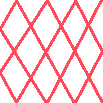
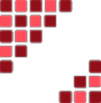





Corner Structures (structure is only on the shaft edges)
Corner Structures (structure is only on the shaft edges)



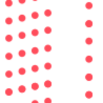




“Corner Grips” is another option to customize the grip even more to your own taste. With these structural variants you also have the option of choosing which edges of your shaft the grip should be placed on. Choose from the following three options:
- “Front”(the two edges towards the stick face)
- “Back”(the two edges towards your body)
- “Front and back”(all four edges of the shaft)
Here at MARVIC HOCKEY we offer you an unrivaled selection of more than 15 grip options.
STICK LENGTH
Place your hockey stick with the back of the shaft flush against a wall. Now measure the length from the floor to the end of the shaft. This will give you the exact height. Please note that some other brands only measure the length from the heel of the club to the end of the shaft, resulting in a size difference.
Our standard is 66″ which is at least 1″ longer than most of our competitors’ sticks!
WHAT LENGTH SHOULD I CHOOSE?
To know which stick height is best for you, stand upright with your twig in front of you (the the stick is directly against your body). Without skates, the stick should reach between your chin and nose. Another way to measure is that the final size should be approximately your total height minus 15-20cm.
Shorter sticks offer more maneuverability and puck control. That’s why these are usually preferred by better technicians to guide the puck closer to the body and to protect it.
Defenders usually have longer sticks because this gives them a higher radius so they can more easily poke pucks away in duels and intercept passes. You can also hit harder slap shots with longer sticks.
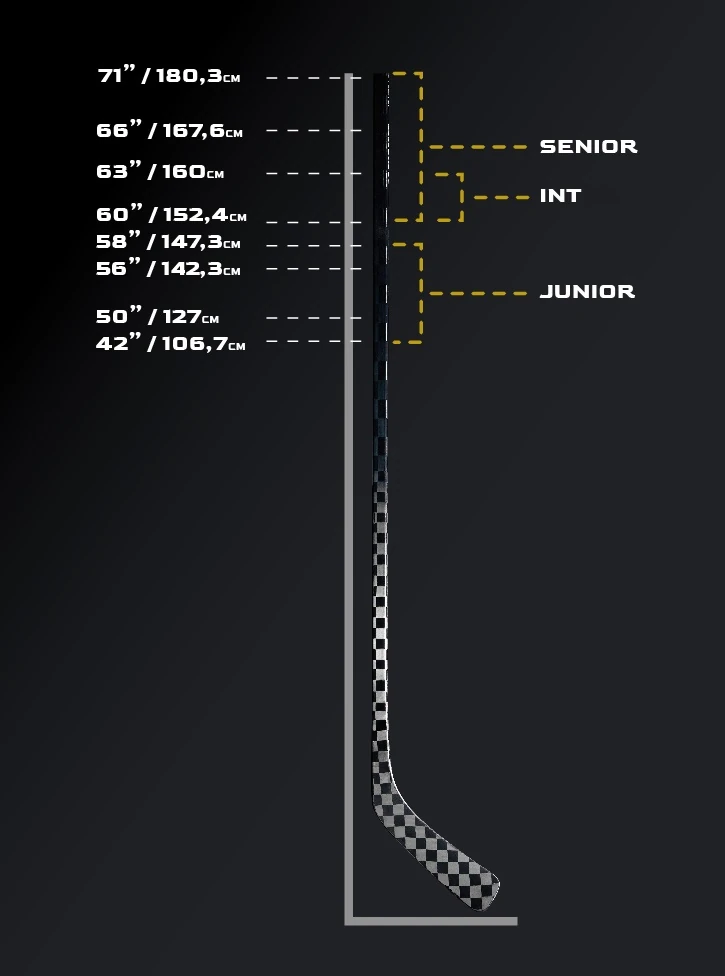
STICK LENGTH
Place your hockey stick with the back of the shaft flush against a wall. Now measure the length from the floor to the end of the shaft. This will give you the exact height. Please note that some other brands only measure the length from the heel of the club to the end of the shaft, resulting in a size difference.
Our standard is 66″ which is at least 1″ longer than most of our competitors’ sticks!
WHAT LENGTH SHOULD I CHOOSE?

STICK LENGTH
Place your hockey stick with the back of the shaft flush against a wall. Now measure the length from the floor to the end of the shaft. This will give you the exact height. Please note that some other brands only measure the length from the heel of the club to the end of the shaft, resulting in a size difference.
Our standard is 66″ which is at least 1″ longer than most of our competitors’ sticks!

WHAT LENGTH SHOULD I CHOOSE?
To know which stick height is best for you, stand upright with your twig in front of you (the the stick is directly against your body). Without skates, the stick should reach between your chin and nose. Another way to measure is that the final size should be approximately your total height minus 15-20cm.
Shorter sticks offer more maneuverability and puck control. That’s why these are usually preferred by better technicians to guide the puck closer to the body and to protect it.
Defenders usually have longer sticks because this gives them a higher radius so they can more easily poke pucks away in duels and intercept passes. You can also hit harder slap shots with longer sticks.
To know which stick height is best for you, stand upright with your twig in front of you (the the stick is directly against your body). Without skates, the stick should reach between your chin and nose. Another way to measure is that the final size should be approximately your total height minus 15-20cm.
Shorter sticks offer more maneuverability and puck control. That’s why these are usually preferred by better technicians to guide the puck closer to the body and to protect it.
Defenders usually have longer sticks because this gives them a higher radius so they can more easily poke pucks away in duels and intercept passes. You can also hit harder slap shots with longer sticks.
We offer you the largest selection of stick lengths on the European market!
Senior:
• 60″ (152,4cm)
• 62″ (157,5cm)
• 63″ (160,0cm)
• 65″ (165,1cm)
• 66″ (167,6cm)
• 67″ (170,2cm)
• 69″ (175,3cm)
• 71″ (180,3cm)
• 72″ (182,9cm)
Intermediate:
• 60″ (152,4cm)
• 62″ (157,5cm)
• 63″ (160,0cm)
Youth:
• 42″ (106,7cm)
• 44″ (111,8cm)
• 46″ (116,8cm)
• 48″ (121,9cm)
• 50″ (127,0cm)
• 52″ (132,1cm)
• 54″ (137,2cm)
• 56″ (142,2cm)
• 58″ (147,3cm)
SHAFT SHAPES
You can choose from three different shaft shapes. Each shape has its own unique characteristics and advantages. If you’re unsure, just give it a try…
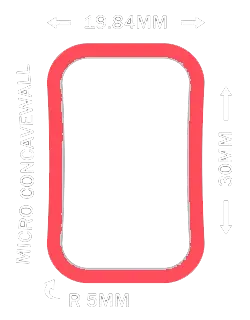

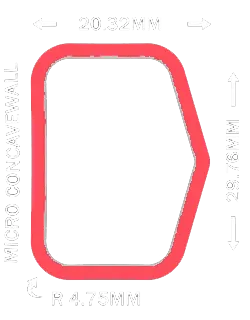
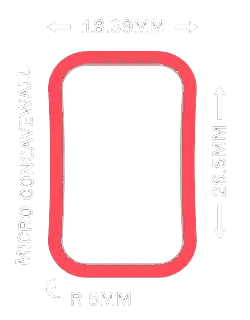
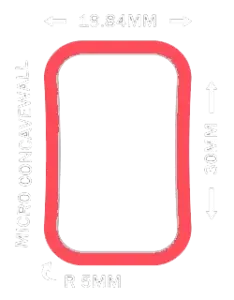
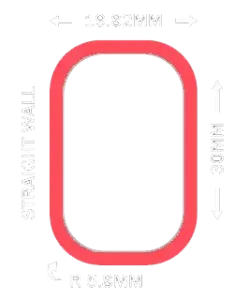
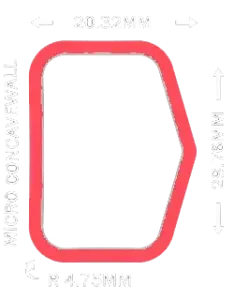
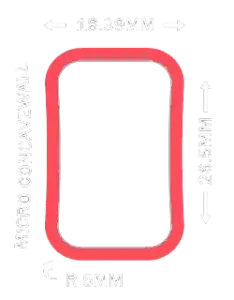
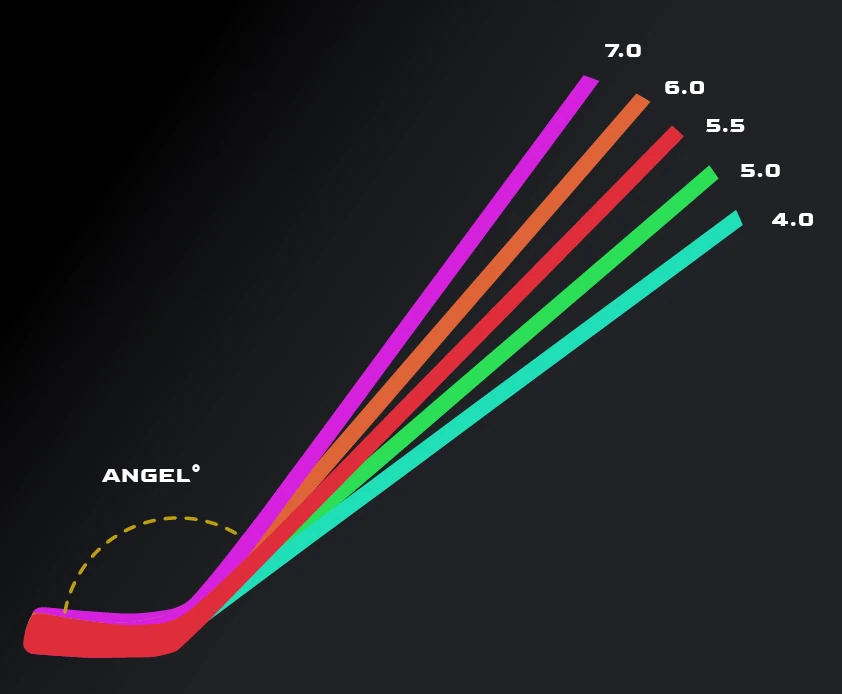

WHAT IS THE "LIE"?
HOW DO I FIND THE CORRECT "LIE"?
Your height, skating position and playing style will all play a big role in your “Lie” choice. Also remember to wear skates when trying out sticks. If you are unsure, start in the middle, i.e. at a lie of 6. Assume your natural skating position, holding the stick comfortably and in the correct position as you would normally control or shoot a puck. Now look at the stick blade. If it lies flat on the ground it is perfect. If the toe of the blade is off the ground, you need a lower lie. If the heel is in the air, you need a higher one.
WHAT IS THE "LIE"?
The so-called “Lie” of your hockey stick is the angle of the shaft in relation to the blade when the bottom edge of the blade is flat on the playing surface. The correct “lie” helps you better control the puck, maximize the power of your shots and play with the correct skating position.


HOW DO I FIND THE CORRECT "LIE"?
Your height, skating position and playing style will all play a big role in your “Lie” choice. Also remember to wear skates when trying out sticks. If you are unsure, start in the middle, i.e. at a lie of 6. Assume your natural skating position, holding the stick comfortably and in the correct position as you would normally control or shoot a puck. Now look at the stick blade. If it lies flat on the ground it is perfect. If the toe of the blade is off the ground, you need a lower lie. If the heel is in the air, you need a higher one.
WHAT IS THE "LIE"?
The so-called “Lie” of your hockey stick is the angle of the shaft in relation to the blade when the bottom edge of the blade is flat on the playing surface. The correct “lie” helps you better control the puck, maximize the power of your shots and play with the correct skating position.

HOW DO I FIND THE CORRECT "LIE"?
Your height, skating position and playing style will all play a big role in your “Lie” choice. Also remember to wear skates when trying out sticks. If you are unsure, start in the middle, i.e. at a lie of 6. Assume your natural skating position, holding the stick comfortably and in the correct position as you would normally control or shoot a puck. Now look at the stick blade. If it lies flat on the ground it is perfect. If the toe of the blade is off the ground, you need a lower lie. If the heel is in the air, you need a higher one.

KICKPOINTS
Put simply, the kick point of a hockey stick is the area of the shaft that bends most easily.
Today there are mainly three different variants:
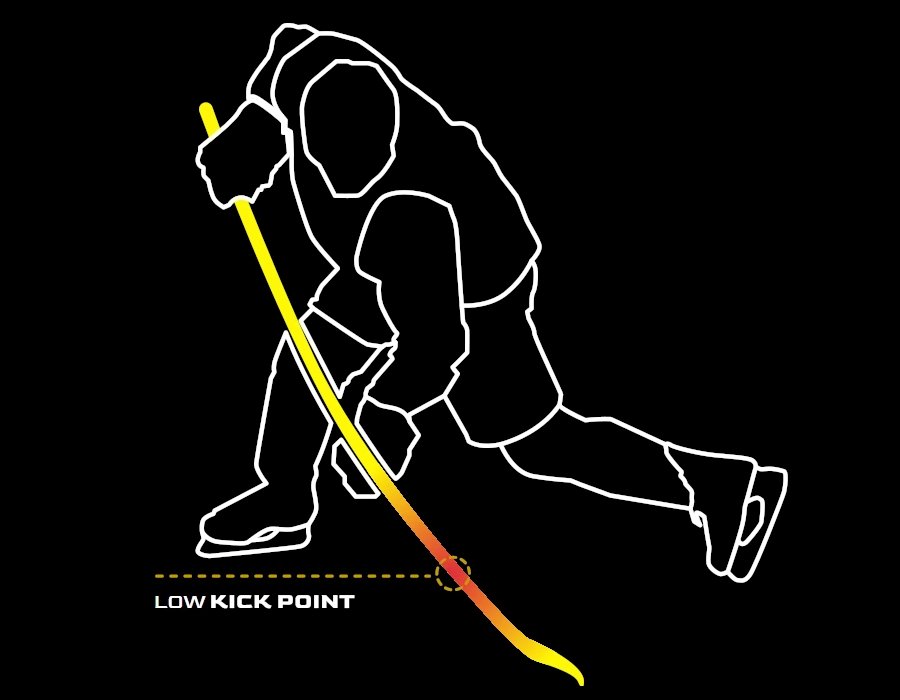

Why kick points are important in hockey
When it comes to hockey sticks, kick points play a crucial role in a player’s performance on the ice. Understanding how the kick point affects your shot can be the difference between a good player and an even better one. Simply put, the kick point is the area of the hockey stick where it flexes the most when shooting. A stick with a low kick point will flex near the blade, allowing for a quicker and more effective release. In contrast, a stick with a higher kick point will flex more in the middle or upper part of the shaft, providing more power, accuracy and control.
- High Kick is the most rarely chosen variant these days. Rather the first choice for the classic defender who loves powerful, elongated slap shots from a distance.
(Bauer Supreme, Warrior Dynasty) - Mid Kick sticks are designed to get you the maximum possible power. They are perfect for players who prefer snap shots or one-timers.
(CCM Tacks, Bauer Nexus, Bauer Proto-R, STX HPR, TRUE Catalyst, Warrior Novium) - Low Kick is ideal for players who prefer a quick puck release, mainly on wrist shots.
(Bauer Vapor, CCM Ribcor, Sherwood Rekker, Blackout Extra Lit, TRUE Project X, Warrior Covert) - Hybrid Kick offers the best of both worlds, making it ideal for two-way players. The flex point of this stick depends on the position of your lower hand. The stick bends more toward the center of the shaft (Mid Kick) for slap- and snap shots, but moves closer to the blade (Low Kick) for wrist shots, creating a “dynamic flex profile”. This makes hybrid sticks an excellent choice for players who need both, quick puck releases and powerful shots without compromising on either.
(CCM Jetspeed, Pro Blackout, Warrior Alpha, STX surgeon, Sherwood Code)
STICK FLEX
“Flex” is the measurement of how flexible or stiff your hockey stick is when you bend it. The flex rate tells you how much weight (pounds) you need to bend the Stick one inch (2.5cm). The optimal flex varies for each player, so you should try many options. The higher the flex number, the harder the stick is. On the other hand, with a smaller flex number the stick is easier to bend.
Since flex is a feature whose selection depends on many different factors such as age, height, weight, playing style, level,…, we do not use a standard table here. If you are unsure, contact us by email and we will be happy to help you. Basically, we recommend choosing something softer rather than too hard.
Please note: The flex value always refers to the standard length 65″ (165.1cm). If you shorten your hockey stick, the flex automatically increases by about 6-10 for every 2 inches (5cm) that are cut off. You buy a hockey stick with a flex of 80 and then cut 2″ off it, then the new felt flex is about 86-90. Another example: An extra-long stick with 71″ & 85Flex feels much more flexible/softer than a 65″ & 85Flex standard stick, even if both have the same flex of 85. If you now shorten the 71″ stick by 6″ (15cm) to 65″, both feel identical in terms of hardness.
MARVIC TECHNOLOGIES & DEVELOPMENT
Marvic wants to offer you top quality combined with the very latest technologies.
These are just a few that we are really proud of:




We only use high-quality Japanese carbon fiber for our sticks. Through unique manufacturing processes, we are able to raise the weight and durability of ice hockey sticks to a new level
ULTRA BAF+ or “Ultra Ballistic Air Foam+” is a special way of constructing the blade using a technique used by aircraft. This extraordinary fusion leads to extreme robustness against point forces
With the ETP system (Energy Transfer Point System), MARVIC HOCKEY has not only succeeded in responding to all the wishes of common ice hockey player types. We have developed Kickpoint technology that leaves nothing to be desired
By merging “nanoXTS” and “ULTRA BAF+”, our engineers have succeeded in developing a completely new technology for goalkeeper sticks. “IS EXTREME” (Impact Shield EXTREME) sets new standards in durability and balance for professional goalkeeper sticks

We only use high-quality Japanese carbon fiber for our sticks. Through unique manufacturing processes, we are able to raise the weight and durability of ice hockey sticks to a new level

ULTRA BAF+ or “Ultra Ballistic Air Foam+” is a special way of constructing the blade using a technique used by aircraft. This extraordinary fusion leads to extreme robustness against point forces

With the ETP system (Energy Transfer Point System), MARVIC HOCKEY has not only succeeded in responding to all the wishes of common ice hockey player types. We have developed Kickpoint technology that leaves nothing to be desired

By merging “nanoXTS” and “ULTRA BAF+”, our engineers have succeeded in developing a completely new technology for goalkeeper sticks. “IS EXTREME” (Impact Shield EXTREME) sets new standards in durability and balance for professional goalkeeper sticks